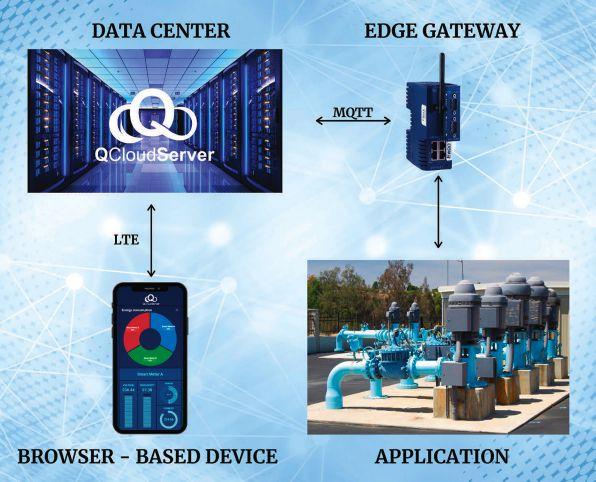
4 minute read
Think again about measurements logic, actions
Measure, apply logic, act
A world with a pandemic can benefit from cybersecurity, remote connections, digital twins and additional training.
Advertisement
During pandemic 2020, the profession of control engineering has included more remote work achieved with greater cybersecurity, more simulation applications, digital twins and digitalization, training and challenging perceptions based on old data. This monthly page aims to challenge those interested in control engineering to think again. We all should consider how science and engineering matter.
Cybersecurity, access
When the pandemic hit, most existing projects continue and most new projects had some delay, but things are ramping up in 2021, especially in the area of automation security, with policies, procedures and solutions as it related to automation hardware, software and networking, according to Anil Gosine, global program manager at MG Strategy+, an automation consultant and CFE Media and Technology content partner. Additional cybersecurity allows new levels of remote access by vendors, support and services, he suggested.
Automation, analytics
More automation, fewer people doing mundane work, greater use of data analytics are among the rising trends, according to Matt Ruth, president of Avanceon, a system integrator. Ruth, who previously discussed 10 ways manufacturers can advance COVID-19 competitive preparedness, said as complexity, market pressures and interdependencies in automation increase, there’s a need to analyze data to unlock the operational efficiency opportunity that would traditionally be missed.
Digitalization, digital twins
Those offering and using automation in machine tools increasingly face similar challenges and both can benefit through greater digitalization and use of digital twins. These were among the messages at Siemens Machine Tool Days 2020. The first session, for machine tool users AND machine tool builders, acknowledged digitalization benefits apply to both audiences. Traditional automation industry thinking can divide machine builders from machine users. A common explanation among technology sellers is you don’t need to know how the watch works to tell time. A common frustration among technology users: Vendors create unnecessary barriers inside “black-box” offerings to lock users into their technologies (by making things non-interoperable).
It’s more complex than that. Other influences on the way to higher productivity, remote diagnostics, more digitalization and digital twin benefits include intellectual property protection, differentiation among competitors and a large legacy base. Traditional customers are often unwilling to adapt/change—those are the ones with often-permanent signs out front saying: “CNC programmer/operator wanted.” In the age of Industry 4.0 and Industrial Internet of Things (IIoT), more success is likely when technology vendors adopt their customers’ needs as their own.
Online training
The pandemic has created more need for online education, said Frank Lamb, Automation Primer and Control Engineering editorial board member. Lamb’s in-person programmable logic controller (PLC) programming classes have switched to web-based training.
Think again about what you know and rethink how you’re using new information ce.
Mark T. Hoske, Content Manager
M More INSIGHTS
October’s call to action included: October’s
- Picture engineering inspiration - Write 2021 articles - Review the finalists, vote for the best
Engineers’ Choice products through
December.
® 3010 Highland Parkway, Suite 325, Downers Grove, IL 60515. 630-571-4070, Fax 630-214-4504
Content Specialists/Editorial
Mark T. Hoske, Content Manager 630-571-4070, x2227, MHoske@CFEMedia.com Jack Smith, Content Manager 630-571-4070, x2230, JSmith@CFEMedia.com Kevin Parker, Senior Contributing Editor, IIoT, OGE 630-571-4070, x2228, KParker@CFEMedia.com Emily Guenther, Director of Interactive Media 630-571-4070, x2229, eguenther@CFEMedia.com Amanda Pelliccione, Director of Research 978-302-3463, APelliccione@CFEMedia.com Chris Vavra, Associate Editor CVavra@CFEMedia.com
Contributing Content Specialists
Suzanne Gill, Control Engineering Europe suzanne.gill@imlgroup.co.uk Ekaterina Kosareva, Control Engineering Russia ekaterina.kosareva@fsmedia.ru Agata Abramczyk, Control Engineering Poland agata.abramczyk@trademedia.pl Lukáš Smelík, Control Engineering Czech Republic lukas.smelik@trademedia.cz Aileen Jin, Control Engineering China aileenjin@cechina.cn
Editorial Advisory Board
www.controleng.com/EAB
Doug Bell, president, InterConnecting Automation, www.interconnectingautomation.com David Bishop, president and a founder Matrix Technologies, www.matrixti.com Daniel E. Capano, senior project manager, Gannett Fleming Engineers and Architects, www.gannettfleming.com Frank Lamb, founder and owner Automation Consulting LLC, www.automationllc.com Joe Martin, president and founder Martin Control Systems, www.martincsi.com Rick Pierro, president and co-founder Superior Controls, www.superiorcontrols.com Mark Voigtmann, partner, automation practice lead Faegre Baker Daniels, www.FaegreBD.com
CFE Media and Technology Contributor Guidelines Overview
Content For Engineers. That’s what CFE Media stands for, and what CFE Media is all about – engineers sharing with their peers. We welcome content submissions for all interested parties in engineering. We will use those materials online, on our website, in print and in newsletters to keep engineers informed about the products, solutions and industry trends. www.controleng.com/contribute explains how to submit press releases, products, images and graphics, bylined feature articles, case studies, white papers, and other media. * Content should focus on helping engineers solve problems. Articles that are commercial or are critical of other products or organizations will be rejected. (Technology discussions and comparative tables may be accepted if non-promotional and if contributor corroborates information with sources cited.) * If the content meets criteria noted in guidelines, expect to see it first on our Websites. Content for our e-newsletters comes from content already available on our Websites. All content for print also will be online. All content that appears in our print magazines will appear as space permits, and we will indicate in print if more content from that article is available online. * Deadlines for feature articles intended for the print magazines are at least two months in advance of the publication date. Again, it is best to discuss all feature articles with the appropriate content manager prior to submission.








